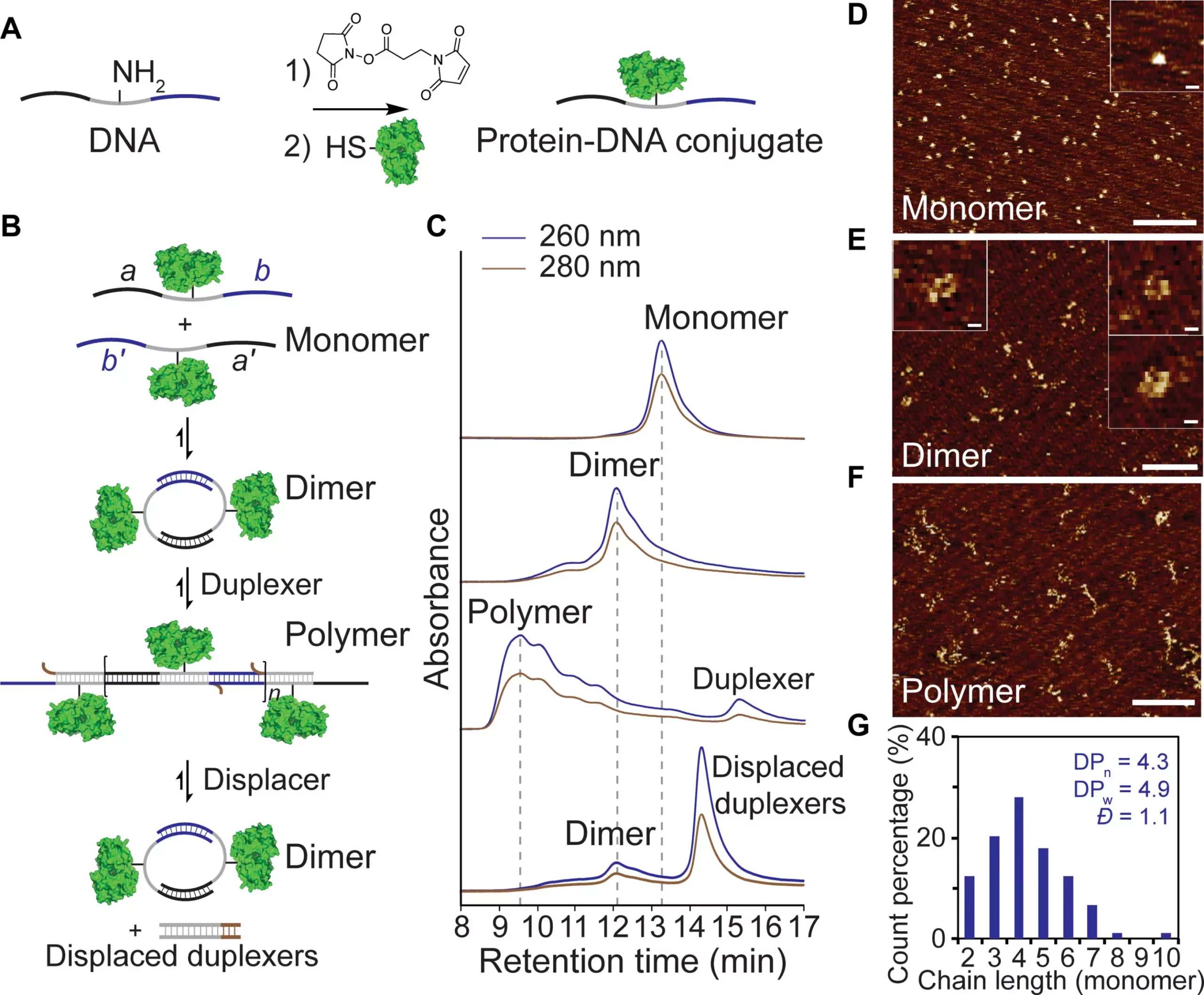The study published in Science Advances by Northwestern investigators, led by Professor Chad Mirkin, sheds light on the promising advancements in manipulating DNA chemistry to create new materials for medical and life sciences applications. The team’s experimental demonstration showcases how strategic design and preparation of DNA systems can lead to structures with varying shapes, flexibilities, and reactivities. This innovative approach opens up a realm of possibilities for developing novel biomaterials that could revolutionize various industries.
Traditionally viewed as the blueprint of life, DNA is now being recognized for its potential as a programmable structural element. By delving into DNA’s ability to facilitate reversible bonding interactions between nanoscale materials, including proteins, researchers are uncovering new avenues for material engineering. Through chemical design, the investigators in the Mirkin lab tailored the conditions for DNA cyclization, offering a deeper understanding of natural processes and paving the way for creating unconventional biomaterials.
One of the key breakthroughs of the study was the manipulation of DNA strands through hybridization. By strategically introducing unhybridized bases into the DNA sequence, the researchers were able to enhance the flexibility of the DNA molecule, allowing it to form circular structures. This structural modification enabled the DNA to interact with surrounding proteins in unique ways, mimicking biological processes such as DNA transcription. The ability to toggle between circular and linear DNA structures highlights the versatility of DNA as a building block for dynamic polymer materials.
The findings of the study underscore the versatility of DNA in creating programmable materials with diverse functionalities. By leveraging DNA chemistry, researchers can synthesize a wide range of materials, including fibers, gels, plastics, and colloidal crystals. The programmable nature of DNA allows for precise control over the organization of inorganic nanoparticles and biomolecules, such as proteins, opening up possibilities for tailored material design. This innovative approach to material synthesis could lead to the development of advanced materials with unique properties and applications.
From a nanotechnology perspective, the ability to manipulate DNA chemistry offers significant advancements in material engineering and biomedical research. The findings of the study highlight the potential of DNA as a versatile tool for creating complex structures and materials with tailored properties. By utilizing DNA as a programmable building block, researchers can design innovative materials for a wide range of applications, from drug delivery systems to tissue engineering. The intersection of DNA chemistry and material science holds immense promise for the future of medicine and biotechnology.
The study by Northwestern investigators demonstrates the transformative potential of DNA manipulation in creating new materials with unique properties. By harnessing the programmable nature of DNA, researchers can engineer materials with tailored structures and functionalities for a variety of applications. The interdisciplinary approach taken in the study highlights the synergies between chemistry, biology, and material science, paving the way for exciting advancements in material engineering. As we continue to unlock the secrets of DNA chemistry, the possibilities for creating innovative materials are endless.


Leave a Reply